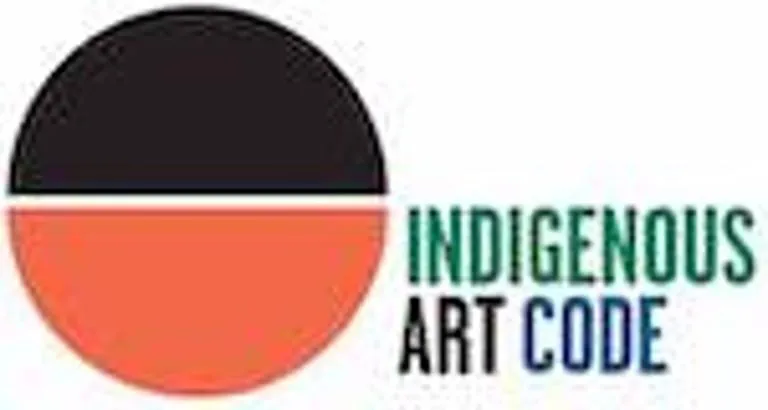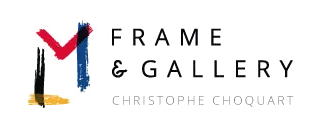ABORIGINAL ART
What is Aboriginal Art?
We collaborate with non-profit community governed organizations to bring contemporary Certified original Aboriginal art to America. Australian Aboriginal Art translates, in part, an ongoing oral culture over 40,000 years old. Known as the Dreamtime (Jukurrpa, Songlines), Aboriginal Art invites us into a deep and rich culture.
Extra-natural beings traveled through Australia, leaving an intricate web of Dreaming tracks, creating all there is to see. Giant Birds, Rainbow Serpents, Lighting men and many other beings created the Aboriginal people's world. These beings created the landscape and all that lives within it. They also formalized the laws of social and religious customs which remains at the core of their identity, guiding much of their daily life.
The Dreaming encompasses the past, present, and future - it is experienced. Each Aboriginal artist inherits their Dreaming throughout generations. These people have the longest continuum of existence and share with us precious and amazing art.
The dotting technique creates a sense of motion or pulsing in the artwork, with a decorative quality of sparkle and shimmer that many artists and collectors seek out. Dotted emphasizes the sacred and ceremonies to communicate and praise ancestors for creating everything there is to see.
By purchasing their art, you support their economic independence and create a source of pride for the artists. LM FRAME & GALLERY acknowledges the traditional owners of country throughout Australia, and their continuing connection to land, sea and community. We pay our respects to them and their culture, to their elders, past, present and emerging.
Aboriginal Art - Cultural Context
Australia is the largest island in the world. Aboriginal means First inhabitant of a country. Australia started populating 40,000 years ago with most Aboriginals coming from Asia.
They live isolated from the world up to the 18th century. They are nomadic people who travel all around the island. The Europeans’ arrival forces them to go live in the North Western part of Australia.
They are hunted away from their land. Only in the earlier part of the 20th century are they socially recognized. Their connection to the land is of utmost importance to their culture and survival.
Dreamtime
Aboriginal art is inspired by the “Dreamtime”. Themes found in most Aboriginal paintings describe ancestral stories that describe their heroes. Aboriginal people call these ancient times the “Dreamtime” which describes common life rules and the origins of animals and landscapes.
These dreams tell the story of their ancestors' adventures when they created the planet Earth. These ancestors were not human beings but kangaroo, possums, stars or rain beings.
Each Aboriginal has one's own Totem, linked to a birthplace or revealed by parents in a dream. This totem is a life guide. Most Aboriginal people are painters. It is complex to understand Aboriginal painting without being initiated by tribes’ elders.
All these symbols embedded in these paintings are like secret codes, specific to each tribe/community. It is a language.
Art Composition & Technique
To compose an Aboriginal painting, the artist first chooses a dimension and the symbols/story to tell. Then a decision is made on the positioning of each symbol on the painting. Forms, lines, symbols and values all are thought through in advance to deliver a clear message.
Symbols featured today on canvas used to be drawn on the sand or grottos’ walls. These symbols represent the paths used by mythical heroes from the Dreamtime. They create geographical maps drawn with an aerial view.
Aboriginal artists paint on their bodies, bark wood, rocks and more recently on canvas. They mainly use 4 colors : yellow earth ochre, red, coal black and cray white. They use small wood batons or their fingers as paint brushes.
The palette of colors used by Aboriginal artists reveals the deep connection that exists between them and their land.
The base color of Aboriginal paintings is usually in the red, black or ochre. Symbols are painted on top of the base in various sizes using earth like colors. The artist first delimits the shapes and then fills them with a multitude of dots and lines. The symbols are simplifications of animals, seeds, nature fixtures like water and hills.
The Meaning of Dot Painting

The Meaning of Dot Painting
Australian Aboriginal dot painting is a unique and intricate art form deeply rooted in the cultural heritage and storytelling traditions of Indigenous Australians. Here are some key aspects of its meaning:
Connection to the Land: Dot paintings often map out landscapes, detailing the lay of the land, the location of water sources, or the paths of ancestral spirits1.
Storytelling and Dreamtime: These artworks are closely tied to Dreamtime stories, which are the creation stories of the Aboriginal people. They depict the creation of the world, animals, and people, as well as the spiritual beings that inhabit the land.
Symbols and Patterns: The dots, lines, and shapes used in these paintings are not just decorative but carry significant meanings. For example, circles can represent meeting spots or waterholes, while U-shaped figures often depict people sitting around a campfire.
Spiritual and Ceremonial Significance: Dot paintings are used in various ceremonies and rituals, symbolizing different aspects of the individual’s identity, clan affiliations, or the purpose of the ceremony.
Historical Roots: While contemporary dot painting gained prominence in the late 20th century, the use of dots in Aboriginal art can be traced back to ancient rock and cave paintings.
These paintings are not just visually captivating but also serve as a profound means of preserving and communicating the rich cultural and spiritual heritage of Aboriginal Australians.
Find Our Art Gallery & Picture Framing Shop in Marietta, GA

1062 Johnson ferry Road Suite 150
Marietta, GA 30068
Open 10-5pm Monday - Saturday
Call Or Text
Get VIP Event And Show Opening Invitations
© LM Frame And Gallery | Privacy Policy & Terms Of Service
